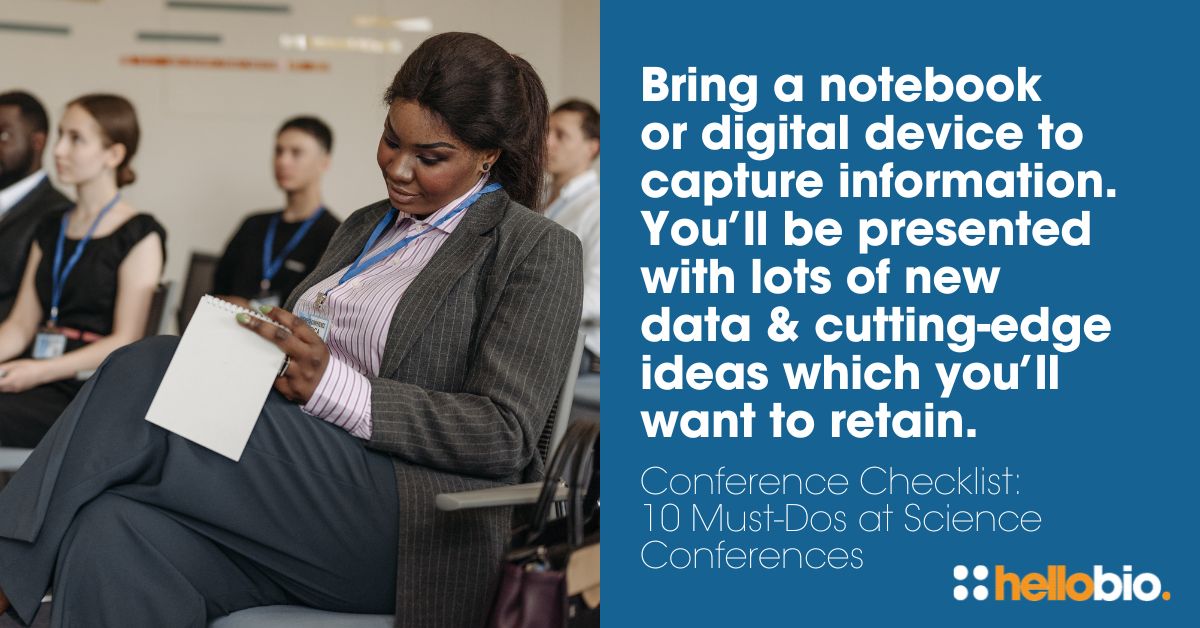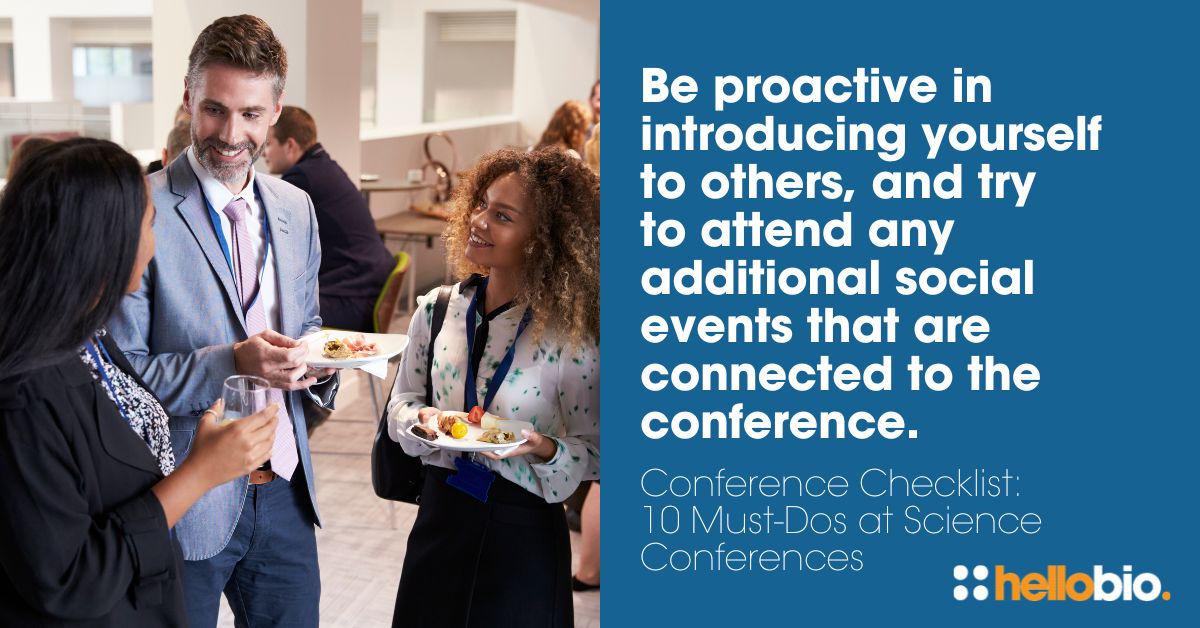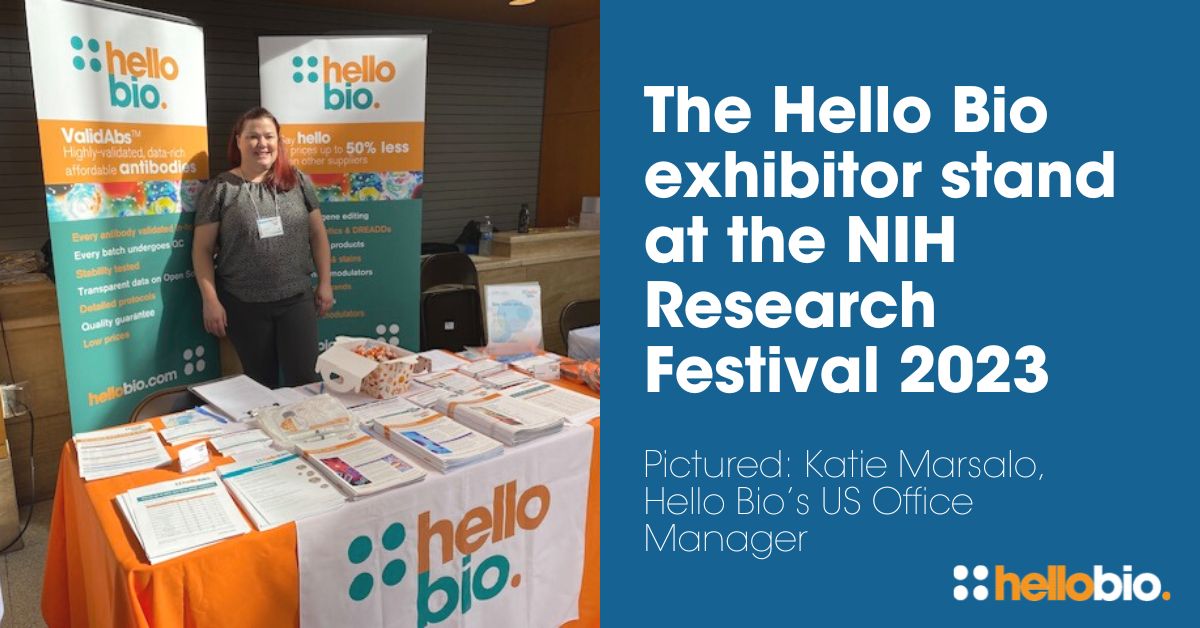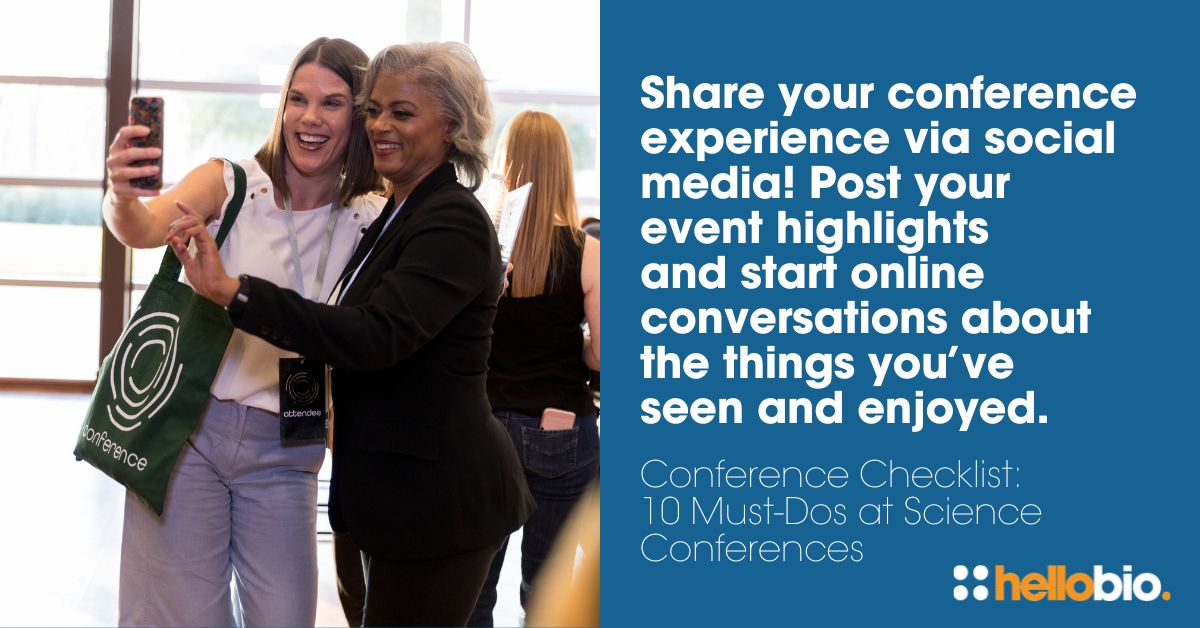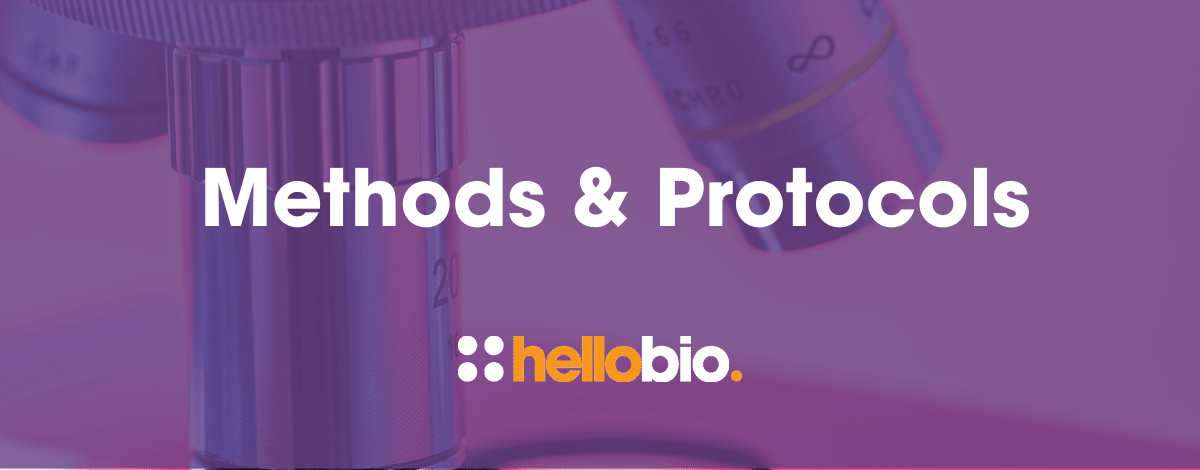Conference Checklist: 10 Must-Dos at Science Conferences
It’s been a great year for life science conferences so far, and as we head into the autumn season there are still lots of fantastic ones yet to come!
If you’re attending your first big science conference this year, you’ll no doubt be excited about seeing some great keynote speakers, learning about the latest cutting-edge developments, and meeting other scientists working in your field. But if you really want to get the most from your conference visit, there are some important things to remember when preparing for your trip.
A science conference is a unique opportunity not only to showcase your own work but also to learn, network, and grow as a professional in your field. The potential for connection and collaboration is huge, and that’s why we’ve put together a checklist of 10 ‘must-dos’ to help you make the most of your conference experience - before, during, and after the event!
1. Plan your schedule
So you’ve registered for your chosen conference and made your travel arrangements - now it’s time to check out the event schedule and make a plan! Most conferences will publish their schedules online well in advance of the event, so you’ll have time to really go through the available activities, register for specific workshops, and find out more about the key speakers. There will probably be lots you’ll want to see and it might not be possible to do it all, but with some careful preparation you will maximise your chances of taking in the most relevant content. Plan your time wisely and prioritise the sessions that are most closely related to your research and career goals. Make a personal timetable to ensure you don’t miss someone or something that could be crucial to your professional development as a scientist.
2. Research other attendees in advance
It’s a great idea to put the feelers out amongst colleagues and other connections to find out who else might be attending the event. Make use of social media event pages and conversation threads to find those that might be discussing the event in advance. If it’s possible to make connections with other attendees beforehand, it will make in-person networking easier when you arrive. Once you know who else is attending, you can make appointments for one-to-one networking, or prepare questions for specific people you’d like to talk to.
3. Dress appropriately
On the day of the event, think carefully about your chosen outfit. To make the best impression, consider dressing in professional business attire. This might be your first and only opportunity to meet some big names in your field of research, and you’ll want them to come away with a good impression of you. It’s also a good idea to pack comfortable shoes as events at large conference centres may include a lot of walking from space to space. You might also be standing for long periods while networking, and this is especially true if you are presenting a poster, so give yourself the best chance of being comfortable for what could be a very long day!
4. Take notes
Be sure to bring a notebook, laptop, tablet or voice recorder to take notes and capture important pieces of information throughout your time at the event. You’ll be presented with lots of new data and cutting-edge ideas which you’ll want to retain if it’s relevant to your research. Many event organisers now record keynote talks and special presentations so that attendees can watch them back at a later date, but it’s still essential to make notes about the things you’ve seen, and also to take down contact details of the people you meet.
5. Give a poster presentation
Presenting your research as a poster at a conference is a great way to get noticed, so if you have the opportunity to do so, go for it! Poster presentations are the perfect way to put your passion for research on display, and to get your ideas and data in front of the right people. They are also a great way to practise your public speaking skills, and being able to answer questions ‘on the spot’ will ensure you really know your research inside and out!
For more advice on presenting posters at conferences, take a look at this great guest blog by Nina Lichtenberg: Tips for Poster Presentations at Scientific Meetings and Conferences
6. Network, network, network!
Probably one of the most valuable aspects of attending a conference is the opportunity to network with others in your field. Be sure to set specific time aside to meet with others and discuss your work. Prepare a short ‘elevator pitch’ about yourself and your research that you can be ready to deliver at any time. Be proactive in introducing yourself to others, and try to attend any additional social events that are connected to the conference. Many organisers will put on ‘pre-conference drinks’ or a ‘closing party’ which are less formal opportunities to chat with other attendees. When embarking on networking, be prepared to share your contact details with others, either via business cards or digital business card apps which use QR codes for the fast exchange of contact information.
7. Visitor sponsor & exhibitor stands
Be sure to check out the sponsor and exhibitor stands which you will find at most professional conferences. Companies will be there to promote their latest products and newest technologies, many of which will be relevant to you and your research. Be sure to pick up promotional material such as flyers or leaflets and chat with the representatives to see how their products might be helpful to you. Many will have freebies to give away, and even special discount codes just for attendees of that particular event!
8. Engage on social media
While you’re at the event, it’s a great idea to share your conference experience online via social media. If the conference has its own hashtag, be sure to share and tag photos or videos of your trip. Sharing online is another great way to make connections with other attendees, especially if you’re not confident with in-person networking. Post your highlights and insights from the event and start online conversations with others about the things you’ve seen and enjoyed. You could even write an online blog or review of your experience at the event, tagging the keynote speakers in any social posts you choose to share.
9. Follow up on new contacts
Once the event is over and you’re back in the lab, be sure to follow up on all the exciting new connections you’ve made! Make contact and connect online or social media, and send a short email to thank them for their time and to tell them how much you enjoyed meeting them. This personal touch will help to create longer-lasting connections and can be crucial for nurturing professional relationships and potential collaboration opportunities.
10. Give feedback
After the event, most organisers will contact the attendees for their feedback about the event. If you have the opportunity, spend some time sharing your thoughts about what you loved, or what you didn’t love, about the event. Organisers will welcome all feedback, both positive and negative, as it will all help to make sure any future events are improved, adapted or streamlined.
More on conferences & events from Hello Bio
If you’re looking for more advice and information about life science conferences, check out these other great resources on the Hello Bio blog:
- Tips for Oral Presentations at Scientific Meetings & Conferences
- The Life Scientists’ Guide to Organizing Events & Conferences
- Our Top Takeaways from BNA 2023
- Ten Science Conferences to Attend in 2023
_________________________________________________
If you enjoyed this article, why not check out the other resources available on our blog. We are passionate about supporting life scientists including early career life scientists and PhD students - with really low-priced reagents, antibodies and biochemicals, early career scientist grants, and resources to help with both personal and professional development. We know how tough it is - so we hope you find these helpful!
More General Support for Life Scientists
For advice on wellbeing, dissertations, presenting at conferences, wellbeing, PhD support, networking and lots more, we have a huge range of articles to help - just click below:
Save up to 50% on our high purity reagents...
When you get to the stage of planning your experiments, don't forget that we offer a range of low-cost, high-purity agonists, antagonists, inhibitors, activators, antibodies and fluorescent tools (yes - they really are around half the price of other suppliers!) You can use our Quick Multi-Search Tool to search for lots of products in one go, and the range includes:
- Enzyme inhibitors and activators
- Chemogenetic ligands
- Ion channel modulators
- GPCR & ionotropic receptor ligands
- Cell biology reagents & biochemicals
Technical resources
Try our Molarity Calculator: a quick and easy way to calculate the mass, volume or concentration required for making a solution.
Try our Dilution Calculator: an easy way to work out how to dilute stock solutions of known concentrations
We also offer a comprehensive range of technical resources including antibody protocols and methods, product guides and mini-reviews:
And finally, don't forget to check back in with our blog regularly for our latest articles. If there’s something you’d love to contribute to the community, whether that’s an interview or article, drop us a line at hello@hellobio.com
---







